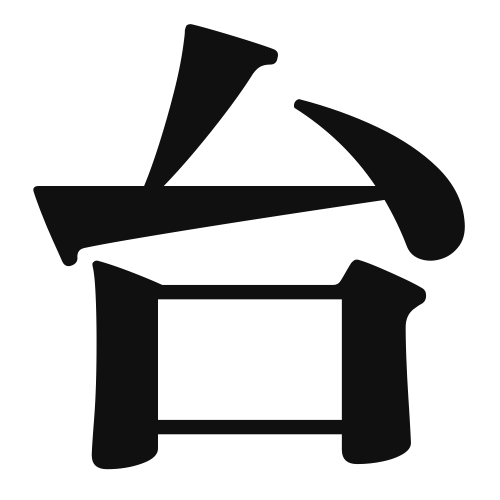1. Overview of Meaning
The kanji “台” (dai) generally means “platform,” “stand,” or “table.” It is used to refer to a base or support for various objects, and it can also denote a unit of counting for machines or vehicles.
2. Formation and Radical
The kanji “台” is a phonetic-ideographic character (形声文字), which means it combines both meaning and sound. The left part, “土” (tsuchi), represents earth or ground, while the right part, “台” (dai), contributes to the pronunciation.
The radical of “台” is “土” (tsuchi), which is associated with earth or land, indicating its connection to physical support or foundation.
3. Examples of Usage
Common words and phrases that include “台” are:
- 台所 (daidokoro) – kitchen
- 台風 (taifuu) – typhoon
- 台車 (daisha) – cart or trolley
Example sentences in daily conversation:
- この台所はとても広いです。 (Kono daidokoro wa totemo hiroi desu.) – This kitchen is very spacious.
- 台風が来るので、注意してください。 (Taifuu ga kuru node, chuui shite kudasai.) – Please be careful as a typhoon is coming.
4. Synonyms and Antonyms
Similar kanji with related meanings include:
- 基 (ki) – base or foundation, which emphasizes the underlying support.
- 台 (dai) – platform or stand, which focuses more on the surface or level.
Antonyms include:
- 落 (raku) – to fall, which represents a downward movement, contrasting with the idea of a stable platform.
5. Cultural and Historical Background
The kanji “台” has significant relevance in Japanese culture, particularly in traditional architecture and furniture design, where platforms and stands are essential elements.
Proverbs and idiomatic expressions that include “台” are:
- 台所の火は消えない (Daidokoro no hi wa kienai) – The fire in the kitchen never goes out, meaning that household matters are always ongoing.
